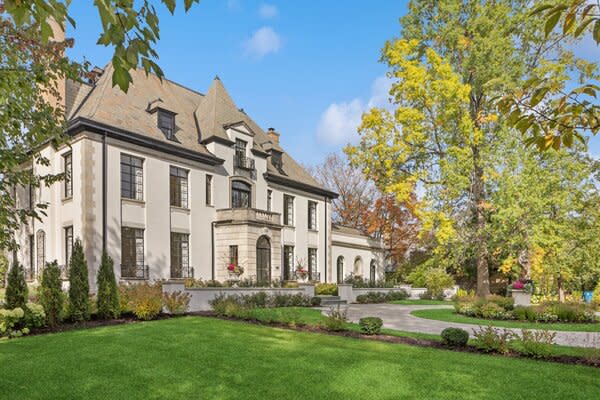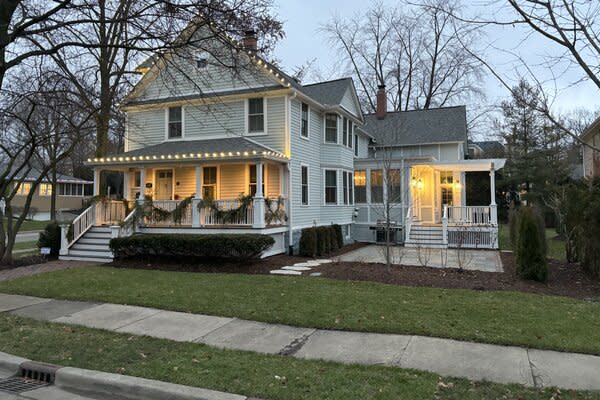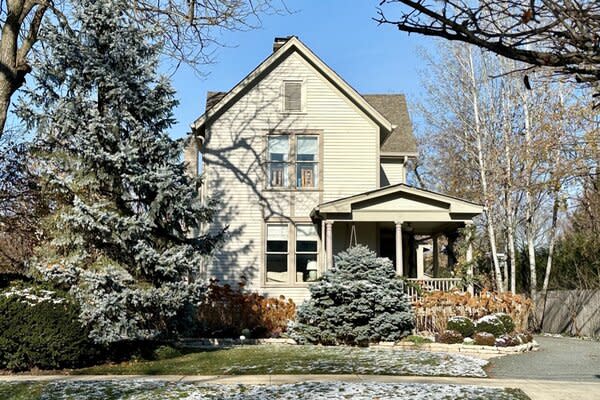In This Town, Renovating Instead of Tearing Down Puts Money Back in Your Pocket
- Oops!Something went wrong.Please try again later.
Homeowners in Hinsdale, Illinois, are bulldozing historic residences in favor of McMansions. But a pioneering preservation incentive could reverse that trend.

For six years, a historic French Eclectic chateau in Hinsdale, Illinois, had sat on the market, and Mimi Collins was getting nervous. The local realtor had walked many clients through the Chicago-area residence, designed by architect Alfred Pashley in the 1920s for a daughter of George Healy, the official portrait painter of Abraham Lincoln. Their reactions were always the same, Collins says: "It’s great, but I don’t know how to modernize it, and it needs a lot of work."
Also troubling was the estate’s spacious half-acre lot in the affluent and popular Chicago suburb with soaring land values and little oversight on non-landmarked buildings. "I didn’t want to see the house knocked down," says Collins, who’d grown so attached to it that in November of 2021, she bought the property herself to restore it.
Since the 1990s, Hinsdale has lost about half of its original housing stock due to teardowns, estimates Jim Prisby, a member of the village’s historic preservation commission. He says the number often topped 100 a year, a sizable dent in the village’s approximately 5,500 single-family residences, which include historic Craftsman and Prairie homes, Queen Annes, and Cotswold-style cottages. In their place went oversized McMansions. The village tried limiting home sizes, but that backfired, Prisby says. Rather than scalpel in renovations to meet the zoning restrictions, homeowners would demolish the existing structures wholesale. A proposal to pause the issuance of teardown permits resulted in claims of overreach on property rights.
In September 2022, Hinsdale officials unveiled a new plan to curtail demolition. They established a historic overlay district that gives a series of incentives to homeowners who successfully apply—for free—for their house to be approved as a historically significant structure. The incentives include access to zoning regulations that are more lenient than those for new construction; an expedited permitting process; permit and application fee waivers; a partial rebate on property taxes for up to five years; and matching grant funds, up to $10,000, for historically appropriate exterior improvements.
"Rather than to continually focus on sticks and throw obstructions out there," says community development director and building commissioner Robb McGinnis, "we instead focused on carrots and incentivizing people to keep these houses." Community response to the new program, adds village planner Bethany Salmon, "has been more successful than we imagined." Sixteen months after its launch, 79 homes have been approved as historically significant.
In July 2023, Sarah and Chad Erwin became the first homeowners to receive approval for their 1883 gable home with Queen Anne details. A year earlier, they had been alerted by their contractor, Catie Knoebel, to hold off on their planned reconfiguration of an awkward and small side deck in anticipation of the imminent historic overlay district. Their patience paid off. The couple was able to build 18 inches beyond what their previous zoning allowed—a difference that allows furniture to fit on their reworked deck. "It became an area where we could entertain and not just be a landing space," Sarah says.
The couple have become advocates of the program, which also expedited their permitting process and waived their $4,500 permit fee. "I’m having more conversations with friends with older homes who are intrigued about the process or are feeling incentivized by what we did," says Sarah.
Two blocks away, Sarah Chase plans to update her 1875 gable ell residence with modern amenities, like a mudroom, and a reworked floor plan to address quirks, such as an open staircase connecting the family room to the basement. The home’s previous owners had fended off builders seeking a teardown opportunity for two years until Chase and her family purchased the property in 2017. "When we were looking for a house, it was important that we were doing our part to keep an older home alive here in town," Chase says. A Hinsdale native with fond memories of growing up in her parents’ creaky older home, she had watched her town’s historic residences razed over time with devastation.
Though she and her husband, David, had begun the design process two years ago, life kept them busy and they didn’t start looking for a builder until recently. "Once we saw the incentives, it was certainly motivation to see the project through," she says . They benefited from the expedited permitting process and waived permit fees; upon their project’s completion, they will also seek approval to receive the partial tax rebate, totaling $6,000 over five years, and a matching grant.
See the full story on Dwell.com: In This Town, Renovating Instead of Tearing Down Puts Money Back in Your Pocket
Related stories:




